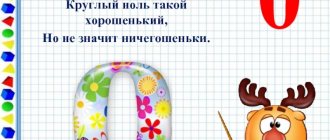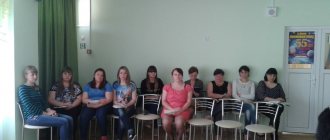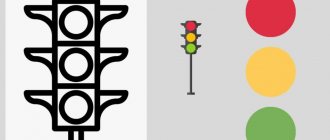ELVIRA TAGIROVA
Card index of environmental games
Ecological games in kindergarten are very important for developing young children’s understanding of the world around them, living and inanimate nature. They can bring considerable joy to children if the teacher takes care of a variety of games on an environmental theme . The specificity of environmental games for preschoolers is that the material conveyed to the child should not only be useful and educational, but also interesting. Therefore, it is best to involve children in active participation in the game to conduct environmental games for kids.
Didactic game “Whose traces”
Target. Development of visual analysis of images of objects in children.
Equipment. Drawings, photographs depicting animal tracks.
Progress of the game
From two to four children can take part in the game. The teacher suggests picking up two cards (animal tracks and the whole animal)
.
Children are given cards with a picture of an animal; they need to find traces of this animal. After completing the task, children can test themselves. To do this, you need to turn the cards back : if the color and shape of the figures on the back side match, then the combination of cards is assembled correctly . The one who correctly collects the largest number of combinations wins.
Didactic game “Find the shadow”
Goal: To teach children to find given silhouettes by overlapping.
Tasks:
-Develop cognitive activity.
-Develop children's visual perception, attention, and thinking.
-Develop visual superimposition techniques.
-Develop attentiveness, observation, memory and perseverance.
Card file of ecology games (senior group)
30. “WHAT IS MADE OF WHAT?”
Target:
teach children to identify the material from which an object is made.
Materials: wooden cube, aluminum bowl, glass jar, metal bell, key, etc.
Progress of the game: children take different objects out of the bag and name them, indicating what each object is made of.
31. “THE EDITABLE IS NOT EDIBLE”
Target:
consolidate knowledge about edible and inedible mushrooms.
Materials: basket, object pictures with images of edible and inedible mushrooms.
Progress of the game:
On the table in front of each child there are pictures of the answer. The teacher makes a riddle about mushrooms, the children look for and put a picture of the answer to an edible mushroom in a basket.
32. “USEFUL - NOT USEFUL”
Target:
consolidate the concepts of healthy and harmful products.
Materials: cards with images of products.
Progress of the game:
Place what is useful on one table and what is not useful on another.
Healthy: rolled oats, kefir, onions, carrots, apples, cabbage, sunflower oil, pears, etc.
Unhealthy: chips, fatty meats, chocolates, Fanta, etc.
33. “FLYING, SWIMMING, RUNNING”
TARGET:
consolidate knowledge about living nature objects.
Progress of the game
: The teacher shows or names an object of living nature to the children. Children must depict the way this object moves. For example: when hearing the word “bunny,” children begin to run (or jump) in place; when using the word “crucian carp,” they imitate a swimming fish; with the word “sparrow” - they depict the flight of a bird.
34. “WHAT IS THIS?”
Target:
consolidate knowledge about living and inanimate nature. Develop thinking.
Progress of the game:
The teacher thinks of an object of living or inanimate nature and begins to list its characteristics. If the children guessed it, the next object is guessed; if not, then the list of signs increases. For example: “Egg” - oval, white, fragile, hard on top, often liquid inside, nutritious, can be found in a peasant’s yard, in the forest, even in the city, chicks hatch from it.
35. “DROPS ARE WALKING AROUND A CIRCLE”
Target:
consolidate knowledge about the water cycle in nature.
Progress of the game
: The teacher invites the children to play an interesting and magical game. But to do this you need to turn into small drops of rain. (Music sounds like rain) the teacher says the magic words and the game begins.
The teacher says that she is Tuchka’s mother, and the guys are her little children, it’s time for them to hit the road. (Music.) The droplets jump, run, and dance. Mama Tuchka shows them what to do.
36. WHEN DOES THIS HAPPEN?”
Target.
Clarify and deepen children's knowledge about the seasons.
Progress of the game.
The teacher names the time of year and gives the chip to the child. The child names what happens at this time of year and passes the chip to the next player. He adds a new definition and passes the chip, etc.
Progress of the game:
Option 1. The teacher gives the children colored cards depicting various objects. Invites children to look at them. Next, the teacher shows a shadow (black and white)
any
picture . Children must find, among the available cards , the one that matches the desired silhouette and put a shadow on the picture .
Didactic game "Seasons"
for children 3–6 years old
"SEASONS"
Goal: to form children’s understanding of the alternation of seasons and some of their characteristics. Learn to establish cause-and-effect relationships between natural phenomena (season-vegetation-human labor)
. Expand your horizons.
Develop and activate your vocabulary.
Material: four cards depicting the seasons, cards depicting the characteristic features of each season.
Progress of the game.
The game can be played by 4-8 people. The presenter shows one card depicting the characteristic features of each season. The player whose card this characteristic relates to describes and justifies this choice, lays out the card on the colored field .
Didactic game “Guess whose tail?”
(3-7 years)
Didactic tasks: consolidate knowledge on the topics “Wild and Domestic Animals”, create conditions for activating the child’s vocabulary on these topics, consolidate the ability to form possessive adjectives, develop the ability to analyze, consolidate the ability to distinguish and name animals, and develop fine motor skills of the hands.
Material: Animal images cardboard (silhouettes)
and tails glued to clothespins.
Ecological games for preschool children
Ecological games for preschool children
Author: Skripnikova Valentina Mikhailovna. Application: This article will be useful to kindergarten teachers, parents, and additional education teachers. Explanatory note: In the proposed didactic environmental games, the child gains a variety of experience interacting with the outside world; carries out very specific environmental work; learns the rules of behavior in the environment; becomes kind, sensitive, responsive to someone else's misfortune. Man has two worlds: One, which created us, The other, which we have been creating since time immemorial to the best of our ability. N. Zabolotsky. Purposes of use: education of norms and rules of environmentally sound interaction with the outside world, transformation of a significant part of them into the child’s habits; creating a need for the acquisition of environmental knowledge, focusing on their practical application; Objectives: - Formation of children's knowledge about nature. Ecological games in kindergarten are very important for developing young children’s understanding of the world around them, living and inanimate nature. Play is not only entertainment, but also a method by which children get to know the world around them. In the game, children simply need to be attentive to the rapidly developing plot. The game requires children to memorize a lot of symbols and quickly decide how to act in unexpected situations, while respecting the rules of the game. Environmental education of children during play is most effective. While playing, the child performs the entire complex of mental and practical actions, without realizing it as a process of deliberate learning. In games, children repeat what they have observed, consolidate their knowledge and acquired skills. While watching the game, we try to provide the children with the necessary items, help them correctly resolve issues that arise, and correct misconceptions. It is very important that the game is not imposed on children, and that they reproduce in it only what they themselves have perceived. Didactic game "Recognize the animal." The presenter reads out a description of the animal. Task: determine who it is, without a hint or with a prompt to choose. Game with the ball “I know...” Goal: To develop the ability to name several objects of the same type. Develop the ability to combine objects based on common features. Game actions: Children stand in a circle, in the center is the leader with the ball. The presenter throws the ball and names a class of natural objects (birds, trees, flowers, animals, plants, insects, fish). The child who caught the ball says: “I know 5 names of flowers” and lists them (for example, chamomile, cornflower, dandelion, clover, porridge) and returns the ball to the leader. The leader throws the ball to the second child and says: “Birds” and so on. Didactic game “Guess which bird is singing?” Goal: The ability to identify bird voices from sound recordings. Determine which bird sings and how it sings (subtle, sonorous, melodic, quiet, drawn-out, etc.). Cultivate interest and caring attitude towards birds. Game activities: The teacher offers to listen to a recording of bird voices. We need to determine which bird is singing. How can you determine by its voice which bird sings and how. Invite children to practice pronouncing the sounds of bird songs. The game uses a disc with recordings of bird voices.
Didactic game “What would happen if the forest disappeared...” The teacher suggests removing insects from the forest: - What would happen to the rest of the inhabitants? What if the birds disappeared? What if the berries disappeared? What if there were no mushrooms? What if the hares left the forest? It turns out that it was no coincidence that the forest gathered its inhabitants together. All forest plants and animals are connected to each other. They won't be able to do without each other. Game "Tops-Roots". Children sit in a circle. The teacher names vegetables, the children make movements with their hands: if a vegetable grows on the ground, in a garden bed, the children raise their hands up. If the vegetable grows on the ground, the hands are lowered down. Didactic game “Where the fish hid.” Goal: to develop children’s ability to analyze, consolidate the names of plants, and expand their vocabulary. Material: blue fabric or paper (pond), several types of plants, shell, stick, driftwood. Description: children are shown a small fish (toy) that “wanted to play hide and seek with them.” The teacher asks the children to close their eyes and at this time hides the fish behind a plant or any other object. Children open their eyes. “How to find a fish?” - asks the teacher. “Now I’ll tell you where she hid.” The teacher tells what the object “the fish hid” looks like. Children guess. Outdoor game “We are autumn leaves.” The children hold twigs with autumn leaves in their hands. We are leaves, we are leaves, we are autumn leaves. We sat on branches, the wind blew and we flew. We flew, we flew. All the leaves are so tired. The breeze stopped blowing and everyone sat in a circle. The wind suddenly blew again and blew the leaves off the branches. All the leaves flew and sat quietly on the ground. Didactic game “Spring, summer, autumn.” Preparing for the game: the teacher prepares three large pictures depicting spring, summer and autumn and small ones on which plants blooming in spring, summer, and autumn are drawn. Didactic task: to clarify children’s knowledge about the flowering time of individual plants (for example: daffodil, tulip - in spring, golden ball, asters - in autumn, etc.); teach children to classify according to a certain criterion, develop their memory and intelligence. Game action: the game can be played in the same way, “how and when does this happen?”, “Guess what grows where” Didactic game “Which plant is gone?” Four or five plants are placed on a table. Children remember them. The teacher invites the children to close their eyes and removes one of the plants. Children open their eyes and remember which plant was still standing. The game is played 4-5 times. You can increase the number of plants on the table each time. Didactic game “Yes - no”. All questions from the presenter can only be answered with “yes” or “no”. The driver will go out the door, and we will agree on what animal (plant) we will wish for him. He will come and ask us where this animal lives, what it is like, what it eats. We will answer him with only two words. An ecological game from the “Guess who I am?” series. Mom makes a wish for an animal and gives it a description. For example: a wild animal lives in the forest. eats grass. Your baby should ask you questions, but at the same time receive not direct, but leading answers. Ecological game "Garden - vegetable garden." Goal: To consolidate children's knowledge of what grows in the garden or vegetable garden. Develop children's memory and attention. Game actions: The teacher brings a basket of vegetables and fruits. — Children, I accidentally mixed up vegetables and fruits. Help me please. During the game, children summarize objects in one word and determine the place where vegetables and fruits grow. Game “Describe, we will guess” . Goal: learn to describe an object and find it by description. DESCRIPTION: The teacher or some fairy-tale character shows vegetables “What is this?” Offers to consider and play the game “Describe, we will guess.” The teacher asks one child to ask a riddle - to describe a vegetable, for example, beets, so that the children know what he is talking about. The sequence of description should be recalled: first you need to talk about the shape, its details, then about density, color, taste (you can offer a reference diagram-model). Game: “Where the nesting doll hid.” Goal: To consolidate the names of plants, to cultivate curiosity and resourcefulness. DESCRIPTION: Plants in a group are placed so that they are clearly visible and can be easily approached. One of the children is blindfolded with a scarf. The teacher hides the nesting doll under the plant. The child is freed from the scarf, he finds a nesting doll and says the name of the plant. Thus, we can say that the game is a multifaceted, complex, pedagogical phenomenon: it is both a gaming method of teaching preschool children, and a form of teaching children, and an independent play activity, and a means of comprehensive education of the child. Didactic game “What insect, name it?” Goal: To develop the concept of “insect” in children. Recognize and name representatives of insects: fly, butterfly, dragonfly, ladybug, bee, bug, grasshopper... Didactic material: Cut pictures of insects. Methodology: Children must quickly assemble a picture and name the insect. If someone finds it difficult, you can use riddles: She is cuter than all the bugs. Her back is red. And on it are circles, little black dots. (Ladybug) She has 4 wings, The body is thin, like an arrow, And big, big eyes, They call her... (Dragonfly) She drinks the juice of fragrant flowers. Gives us both wax and honey. She is sweet to all people, And her name is... (Bee) I don’t buzz when I sit, I don’t buzz when I walk. If I'm spinning in the air, I'll buzz a lot. (Beetle) We will spread our wings - The pattern on them is beautiful. We are spinning and flying - What space there is all around! (Butterfly) Thus, we can say that the game is a multifaceted, complex, pedagogical phenomenon: it is both a gaming method of teaching preschool children, and a form of teaching children, and an independent play activity, and a means of comprehensive education of the child.
We recommend watching:
Ecological games for children of senior preschool age (5-7 years old) Ecological travel game for children 6-9 years old Ecological quiz scenario for preschoolers of the preparatory group Ecological games for preschoolers
Similar articles:
Conversation “Take care of the forest” for preschool children of the senior preparatory group
Game “Nature Experts” for older preschoolers
Brain - ring for preschoolers 6-7 years old







